| Having rested in the Promised Land State Park, we were
off again, to Scranton PA which houses Steamtown, a 45 acre former railroad
headquarters of the Delaware, Lackawanna & Western Railroad, which made its
money from hauling anthracite coal which was mined in the area. This is a
very clean burning fuel, thus allowing the company to advertise its ability
to carry passengers without getting them sooty. The railroad was created in
1853 by the Scranton family and was managed by William H Truesdale from
1899-1925 during which period it became very successful. Few railroads
prospered after that time. It finally merged with the Erie in 1960 and was
closed completely in 1980. This was also a big steelmaking area (Bethlehem
is not far away). Andrew Carnegie (later of hall and library fame) cornered
the market in making steel rails by undercutting all opposition. In the
1890s they made over half a million tons of rail per year here, about a
sixth of US production. In 1901 he sold out to J P Morgan and the
steelmaking relocated from Scranton, Lackawanna County, to lakeside
Lackawanna, Buffalo, because of the high costs of importing the ore to
Scranton. | 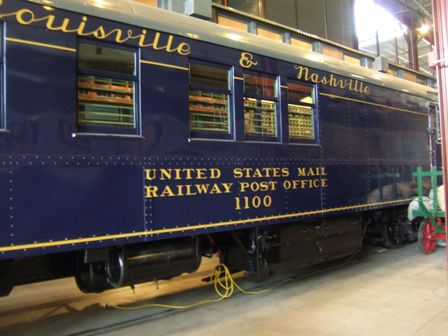 |
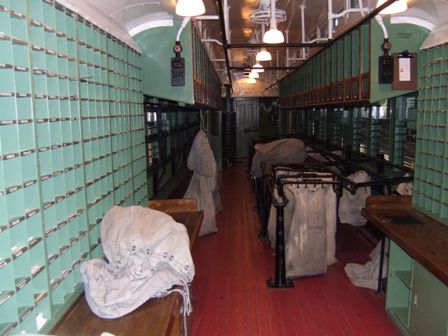 |
The museum was opened in 1986 but most of the buildings are much newer than
that (1995) and built to house the steam engines of F Nelson Blount, a
seafood processing mogul. His collection was moved down from Vermont in
1986, 17 years after his death. It is now managed by the National Parks
Service. This is a railway travelling post office used to sort the mail on
the Louisville and Nashville railroad in Louisiana. It was built in
1914 as an all steel car by the American Car and Foundry company. Railway
post offices have been in use since 1864. |
| This railcar carried passengers from New York to
Buffalo travelling over the rails of several companies. It is typical of the
heavy passenger cars used at the beginning of the century before they were
replaced by even heavier all-steel cars. |  |
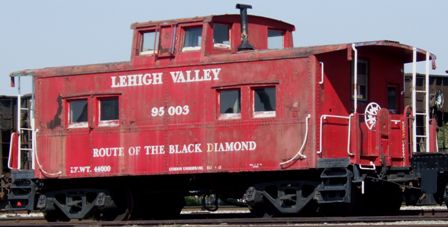 |
The commonest surviving railroad wagon is the caboose. This one belonged to
the Lehigh Valley railroad just to the south of here. |
| One of the thousands of hopper wagons used to carry
anthracite and other coals and ores on almost all railroads in America. | 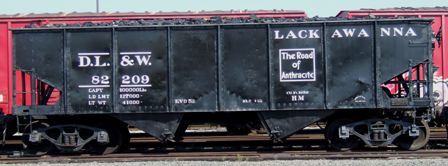 |
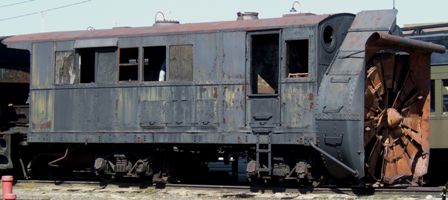 |
Much more unusual is this snowblower still awaiting some renovation. They
still get very heavy snowfalls in the mountains and Buffalo itself is known
as Blizzard City. |
| The other item one sees commonly at these sort of
museums is the railroad crane. They were well used but did not travel such
high mileages and so tend to be in better condition than most rolling stock.
It was built in 1918 for the Central Railroad of New Jersey. It spent most
of its life in northern Pennsylvania. | 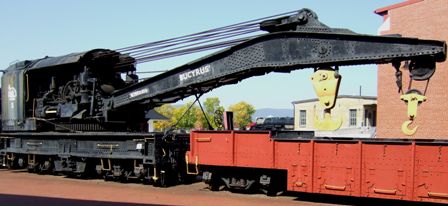 |
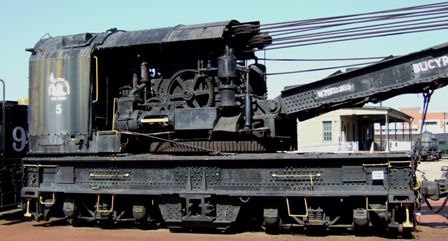 |
This is of a fairly common design built by Bucyrus, who also made steam
shovels which helped build the railroads. It could lift up to 150 tons and
was capable of moving itself for short distances. |
| This industrial 0-6-0T saddle tank was built by ALCO
in 1927. It spent its life at the E J Lavino ferro-manganese blast furnaces
at Sheridan Pennsylvania. | 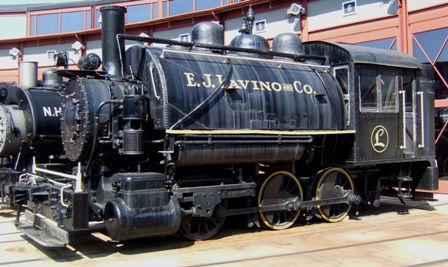 |
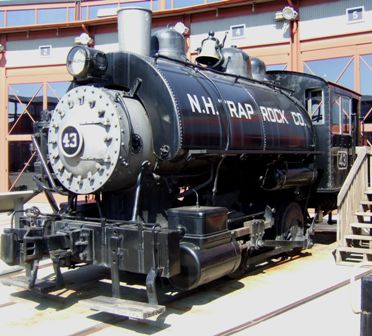 |
This is an 0-4-0T saddle tank built by the Vulcan works in 1919. It worked
in a quarry at New Haven Connecticut. |
| Baldwin built this 2-8-0 Consolidation in 1916 for the
Oneida and Western Railroad in Tennessee. In 1937 it was sold to the Rahway
Valley Railroad where it worked until 1953, mainly on a small branch between
the DL&W and the Lehigh Valley. | 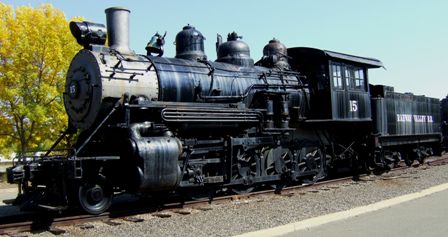 |
 |
Another Consolidation 2-8-0, this one built by ALCO in 1904 for the Illinois
Central Railroad. It worked hauling freight trains in Tennessee until it was
retired in 1956. It was fitted with a super-heater in 1918. This is probably
the oldest loco in the collection. |
| In 1925 the Grand Trunk Western Railroad bought 5
4-8-2 Mountain locomotives with Vanderbilt tenders and enclosed all weather
cabs. | 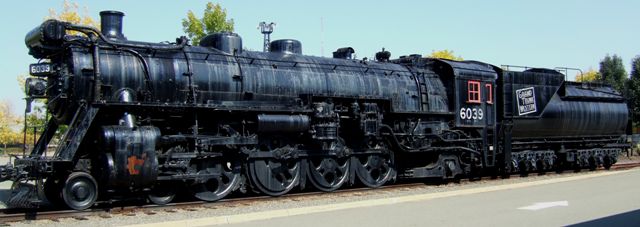 |
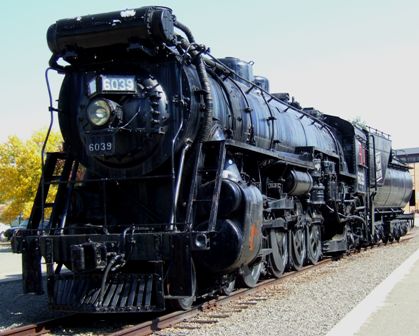 |
The GTWR was controlled by the Grand Trunk Railroad of Canada. They owned
track in Michigan and Illinois and operated services to Detroit. In the
1950s this engine worked in Vermont and was one of the last steam locos in
service in that state. |
| Originally built as a 2-8-0 in the mid 1920s, it was
rebuilt in 1947 as a 4-8-4 Northern. They most often hauled heavy coal
trains and burned low grade waste anthracite. They weighed in at 405 tons
and easily hauled 150 loaded wagons. | 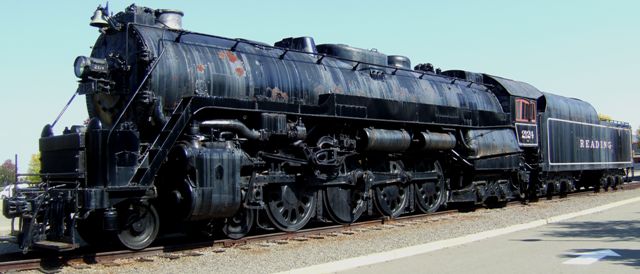 |
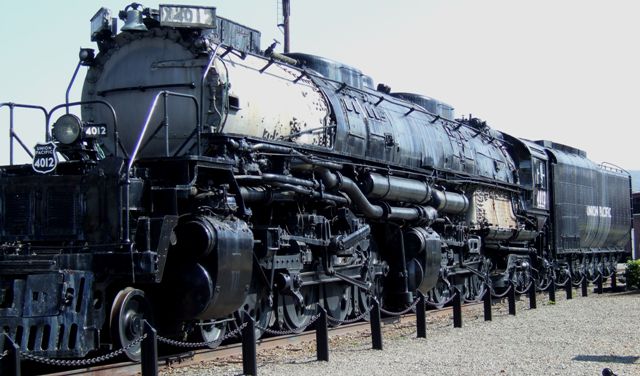 |
This is the largest loco of all in the museum and, I think, ever made. It is
a 4-8-8-4 'Big Boy' built by ALCO in 1941. It is 132'10" long and fully
loaded weighs 1,189,500lbs. It carries 28 tons of coal and 24,000 gals of
water and developed 135,750lbs tractive effort. |
| Such engines were at their peak during WWII hauling
coal across the Wasatch mountains east of Salt Lake City for the Union
Pacific Railroad. Despite their size they were capable of 80 mph. 25 were
built, this is one of only two remaining. |  |
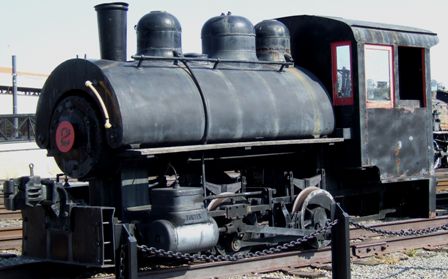 |
This 0-4-0T was fuelled by oil and worked at Bridgeport Connecticut from
1913. It is one of the smallest standard gauge locos ever built. |
| The smallest and the largest locomotives ever built. | 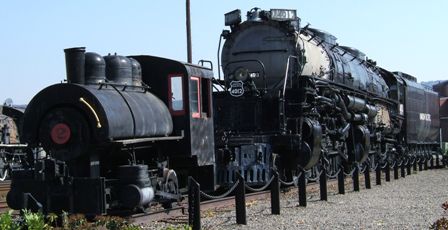 |
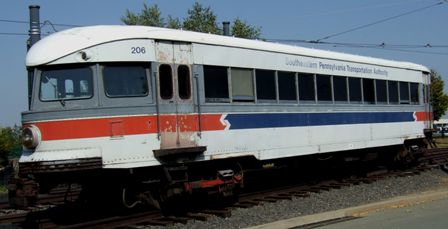 |
Adjacent to Steamtown there is a small tram museum. This tram was on the
rails outside. |
| A couple of passing locos show that even today there
are still dozens of different railroads in the US. |  |
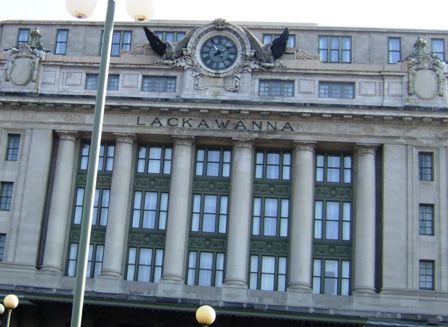 |
Leaving Scranton we passed what was once a railway hotel. It is difficult to
tell if they are wings or horns either side of the clock. It is certainly an
impressive building. |
|